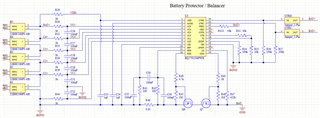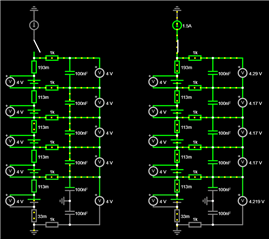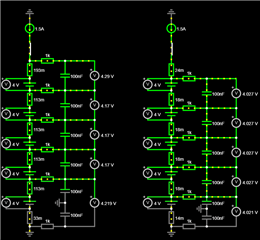Other Parts Discussed in Thread: BQ24610,
Hi Everyone
I am using a BQ7791508 on a board with a 5s battery for protection and cell balancing. The board also has a charger based on the BQ24610. When I was testing the board for the first time it looked like it was working well. The battery was charging normally, up to a point. Before the battery was fully charged, I noticed that the the charging was starting and stopping every few seconds. At this point the cell voltages were around 4V and they should charge to 4.2V. Here is the relevant part of the schematic:

As I was troubleshooting, I determined that the issue was the BQ77915 turning off the charge FET a few seconds after the charging starts. I confirmed this by checking the gate voltage of the charge FET. If I bypass the charge FET, the battery continues to charge normally. This is strange since the BQ7791508 should only disable the charge FET when cell voltages reach 4.2V. At first I thought the charger is maybe applying to much voltage, so I measured the voltages directly over each cell when it is charging every few seconds. The cell voltages when charging are as follows:
S5 = 4.038 V
S4 = 4.043 V
S3 = 4.021 V
S2 = 4.033 V
S1 = 4.060 V
I then measured the cell voltages when charging on the IC's side by measuring over C26, C27, C28, C29 and C31 with the following results.
S5 (C26) = 4.225 V
S4 (C27) = 4.166 V
S3 (C28) = 4.148 V
S2 (C29) = 4.164 V
S1 (C31) = 4.230 V
According to these voltages, the overvoltage fault should occur, but since the actual cell voltages are not so high, the charger keeps trying to charge.
Can anyone please explain this discrepancy in the voltages or give me some advice on how to fix this?



